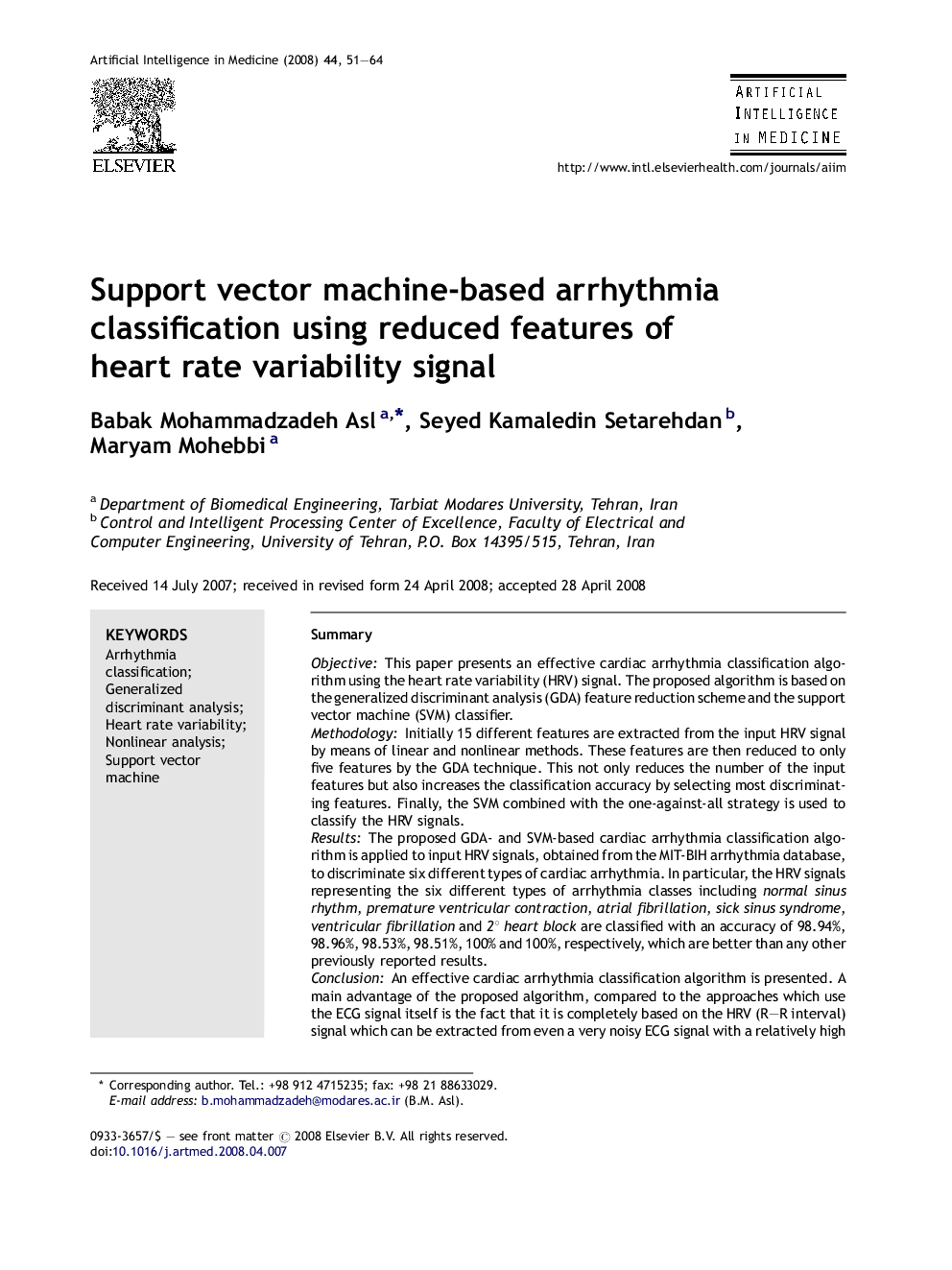| کد مقاله | کد نشریه | سال انتشار | مقاله انگلیسی | نسخه تمام متن |
|---|---|---|---|---|
| 377983 | 658859 | 2008 | 14 صفحه PDF | دانلود رایگان |

SummaryObjectiveThis paper presents an effective cardiac arrhythmia classification algorithm using the heart rate variability (HRV) signal. The proposed algorithm is based on the generalized discriminant analysis (GDA) feature reduction scheme and the support vector machine (SVM) classifier.MethodologyInitially 15 different features are extracted from the input HRV signal by means of linear and nonlinear methods. These features are then reduced to only five features by the GDA technique. This not only reduces the number of the input features but also increases the classification accuracy by selecting most discriminating features. Finally, the SVM combined with the one-against-all strategy is used to classify the HRV signals.ResultsThe proposed GDA- and SVM-based cardiac arrhythmia classification algorithm is applied to input HRV signals, obtained from the MIT-BIH arrhythmia database, to discriminate six different types of cardiac arrhythmia. In particular, the HRV signals representing the six different types of arrhythmia classes including normal sinus rhythm, premature ventricular contraction, atrial fibrillation, sick sinus syndrome, ventricular fibrillation and 2° heart block are classified with an accuracy of 98.94%, 98.96%, 98.53%, 98.51%, 100% and 100%, respectively, which are better than any other previously reported results.ConclusionAn effective cardiac arrhythmia classification algorithm is presented. A main advantage of the proposed algorithm, compared to the approaches which use the ECG signal itself is the fact that it is completely based on the HRV (R–R interval) signal which can be extracted from even a very noisy ECG signal with a relatively high accuracy. Moreover, the usage of the HRV signal leads to an effective reduction of the processing time, which provides an online arrhythmia classification system. A main drawback of the proposed algorithm is however that some arrhythmia types such as left bundle branch block and right bundle branch block beats cannot be detected using only the features extracted from the HRV signal.
Journal: Artificial Intelligence in Medicine - Volume 44, Issue 1, September 2008, Pages 51–64